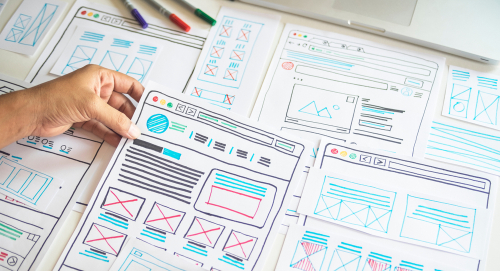
How to Audit the Accessibility of Your Website
At Blue Whale Media, we understand the importance of creating websites that are accessible to everyone. A website should be designed in a way that allows people with disabilities to navigate and use it effectively. That’s why we’ve put together this informative blog to guide you on how to audit the accessibility of your website, ensuring that it complies with the necessary standards.
Understanding Web Accessibility
Web accessibility refers to the inclusive practice of designing and developing websites that can be used by people with disabilities. This includes individuals with visual, auditory, physical, cognitive, and neurological disabilities. By making your website accessible, you can reach a wider audience and provide equal opportunities for all users.
Auditing Your Website’s Accessibility
Auditing the accessibility of your website is a crucial step to identify any potential barriers that may hinder users with disabilities from fully engaging with your website. Here are some key areas to consider when conducting a website accessibility audit:
1. Text Alternatives for non-text Content
People with visual impairments rely on assistive technologies such as screen readers to access website content. It’s essential to provide descriptive alt text for images, video captions, and transcripts for audio content. This ensures that users with visual or hearing impairments can understand the information presented.
2. Keyboard Accessibility
Some users may not be able to use a mouse due to physical disabilities. It’s important to ensure that all interactive elements on your website, such as menus and buttons, can be accessed and navigated using only a keyboard. This can be achieved by providing proper keyboard focus indicators and ensuring that all interactive elements can be reached and activated using the “Tab” key.
3. Colour Contrast
Colour contrast is crucial for users with visual impairments or colour blindness. It’s important to ensure that the text and graphical elements on your website have sufficient contrast against their background. This makes it easier for users to read and understand the content, regardless of their visual abilities.
4. Clear and Consistent Navigation
A clear and consistent navigation structure is essential for all users, especially those with cognitive disabilities. Make sure that your website has a logical hierarchy, easily recognisable navigation menus, and clear labels. This helps users understand where they are on your website and how to navigate to different sections.
5. Forms and Inputs
Forms and input fields should be designed in a way that is easy to understand and complete. Provide clear instructions, error messages, and validation cues to assist users in filling out forms correctly. Additionally, ensure that all form elements can be accessed and completed using a keyboard alone.
6. ARIA Roles and Landmarks
ARIA (Accessible Rich Internet Applications) roles and landmarks are HTML attributes that help assistive technologies understand the purpose and structure of different elements on your website. Properly implementing ARIA roles and landmarks can greatly enhance the accessibility of your website, making it easier for users with disabilities to navigate and interact with.
7. Testing with Assistive Technologies
To truly understand the accessibility of your website, it’s important to test it with assistive technologies. These tools simulate how users with disabilities interact with your website and can help identify any accessibility issues. By testing with screen readers, keyboard-only navigation, and other assistive technologies, you can ensure that your website is accessible to all users.
8. Regular Updates and Maintenance
Accessibility is not a one-time fix; it requires ongoing attention and updates. As technology and accessibility standards evolve, it’s important to regularly assess and update your website to ensure it remains accessible to all users. This includes staying up to date with WCAG (Web Content Accessibility Guidelines) and making necessary changes to your website accordingly.
Conclusion
At Blue Whale Media, we understand the importance of creating accessible websites. Our team of expert website designers and developers in Liverpool are highly experienced in implementing accessibility best practices. We follow WCAG guidelines to ensure that your website meets the highest accessibility standards.
By prioritising accessibility in your website design, you not only provide equal access to all users but also improve the overall user experience. An accessible website can benefit your business by increasing traffic, improving search engine rankings, and enhancing your brand reputation.
If you’re ready to create an accessible website for your small business, contact Blue Whale Media today. Our team is dedicated to creating visually appealing and user-friendly websites that are accessible to all users.
Remember, accessibility isn’t just a legal requirement; it’s a moral and ethical responsibility. By making your website accessible, you can make a positive impact and ensure that everyone has equal access to the information and services you provide.





